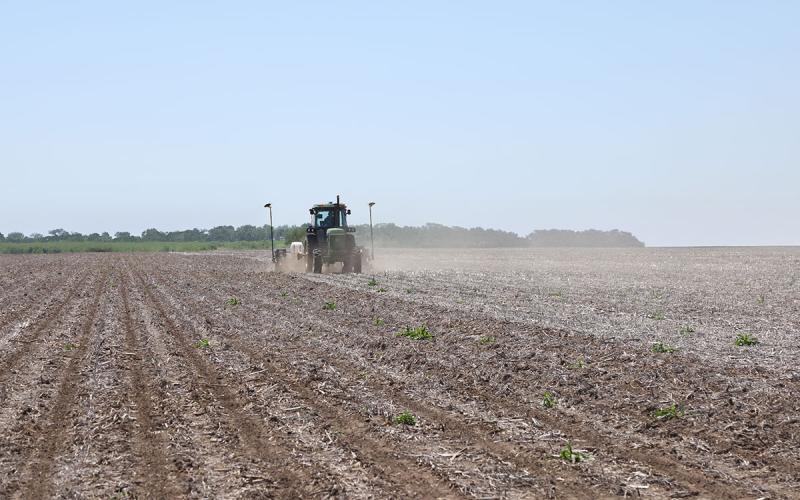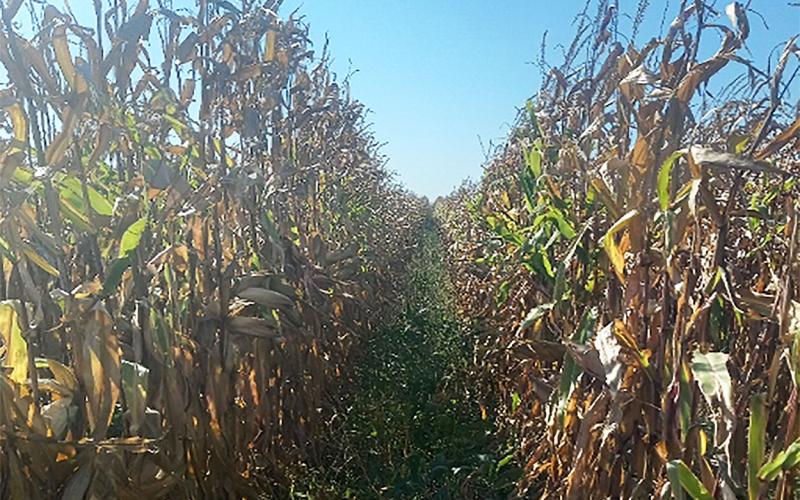Originally Published: May 16, 2019
Written by Jonathan Kleinjan, former SDSU Extension Agronomist.
When cool, wet conditions persist into late spring, growers become more and more worried about potential yield losses due to planting delays. Yield reductions may become significant after about May 20, especially for full-season corn hybrids, and the risk of increased drying costs and crop losses due to an early fall frost also become a concern.
Yield Considerations
Full-season corn hybrids have the greatest potential for maximizing yield. However, increased yield potential comes with increased weather risk. Early to mid-season corn hybrids will likely out-perform late-season hybrids if planting is delayed past about May 15. Fourteen years of data from the Southeast Research Farm in Beresford, SD shows that yield reductions typically begin around May 20th for an early corn hybrid (101-103 RM) and around May 5th for a late corn hybrid (112-118 RM). Data from this study is summarized in Table 1.
|
|
|||||
| Relative Maturity | 17-Apr | 27-Apr | 7-May | 17-May | 27-May |
| Early (~102 RM) | 98 | 100 | 99 | 100 | 90 |
| Full (~115 RM) | 99 | 100 | 97 | 90 | 75 |
| Average | 99 | 100 | 98 | 94 | 82 |
That being said, research from Ohio State and Purdue University show that corn hybrids can ‘make up ground’ when planted later in the season. For example, a hybrid that is rated at 2800 GDDs to black layer when planted at a normal planting date (late April to early May) may require only around 2600 GDDs to black layer when planted in late May or early June. This phenomenon has been noticed in the upper Midwest as well.
Later planting can still produce good yields. In 2015, the SDSU Crop Performance Testing corn hybrid trial was planted at the Bath location on May 21. The early (<95 day) and late (>95 day) trials averaged 214 and 206 bu/acre, respectively. This compares to the 10-year average yields of 211 and 214 for the early and late trials, respectively.
Recent research from Nebraska shows that, while the best yields were obtained with full-season hybrids planted in mid-May, mid-season hybrids (97-105 RM) still perform better than early-season (80-86 RM) hybrids when planting is delayed into early June. A 2019 study in Iowa found that RM choice did not significantly affect yields after mid-May. Keep in mind that both Nebraska and Iowa have a longer growing season than South Dakota.
The Bottom Line
- It’s too early to consider switching hybrids, especially if you are planting early or mid-season maturities.
- Consider switching to slightly earlier RM (i.e. from 100 to 95 day) after about May 25.
- Reevaluate hybrid maturity selections again about June 5. Consider planting a hybrid with even earlier maturity (i.e. 90 day).
- Most published research indicates that optimum planting population remains the same even if planting is delayed.
The decision to change maturities is ultimately up to each individual producer and is based on unique situations such as risk tolerance and harvest capabilities (such as drying capacity). The latest suggested corn for grain planting dates in South Dakota range from about June 5 to June 10 when moving from north to south.
Further Information
- Jasa. L., R. Elmore, and J. Rees. 2019. Nebraska: Delayed Corn Planting – Time To Switch Maturities? University of Nebraska Extension. Lincoln, NE.
- Lauer, J. 2008. “Switch” Date Decisions for Corn Hybrids. Agronomy Advice. Field Crops 28.47-55. University of Wisconsin Extension. Madison, WI.
- Nielsen, R.L. 2019. Hybrid Maturity Decisions for Delayed Planting. Purdue University Cooperative Extension Service. West Lafayette, IN.
- Thomison, P. 2017. Will Planting Delays Require Switching Corn Hybrid Maturities? C.O.R.N. Newsletter. 2017-14. Ohio State University Extension. Columbus, OH.


